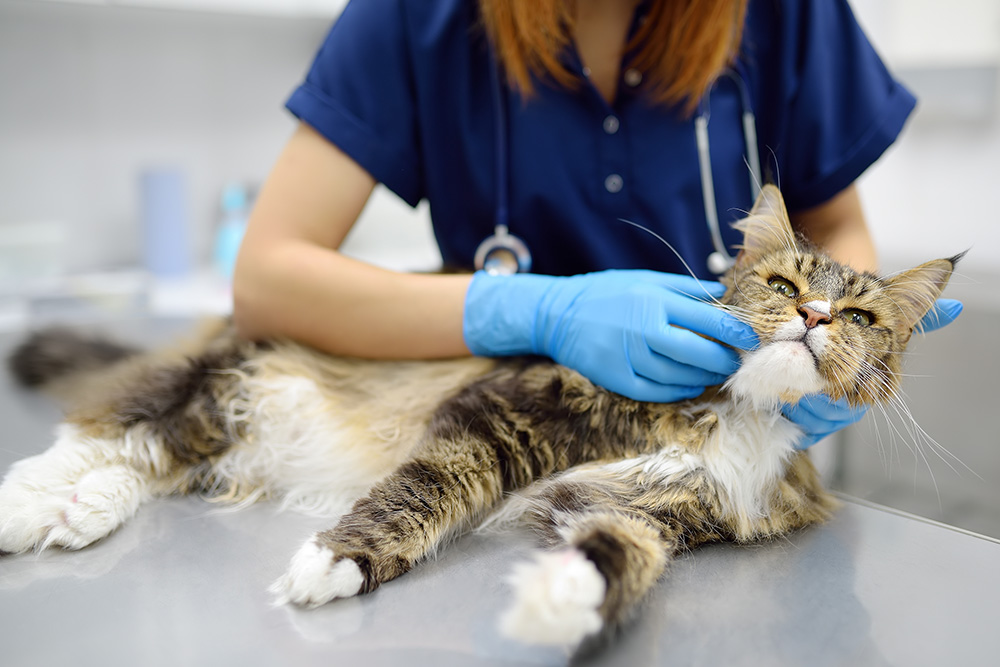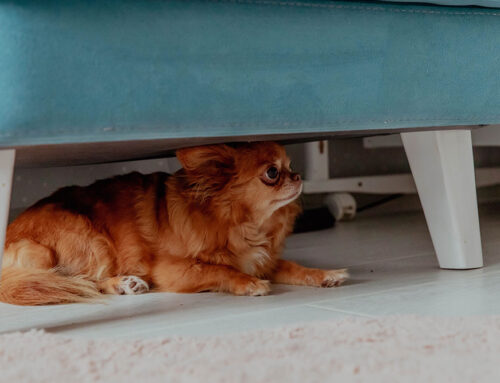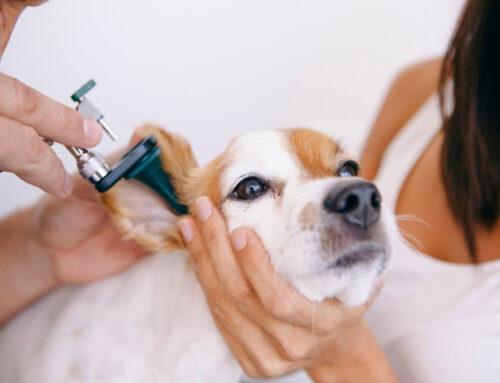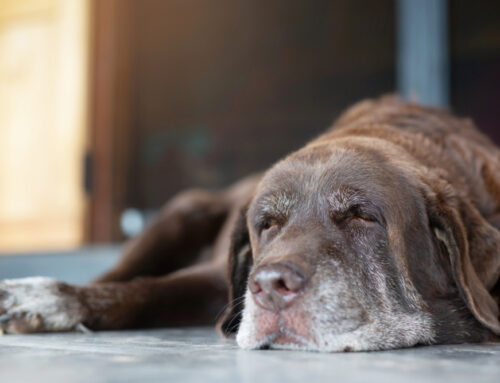Understanding Pet Surgery: What to Expect and How Technology Improves Recovery
Every pet will likely need surgery at some point in life- whether it’s a spay or neuter, a dental extraction, or an advanced orthopedic repair. While the thought of surgery can feel intimidating, modern technology and compassionate care make the experience safer, more comfortable, and more precise than ever before.
At Cupertino Animal Hospital, we use advanced imaging, minimally invasive techniques, and individualized medicine to redefine what surgical excellence looks like. From diagnostic imaging to laparoscopic spay procedures, every detail of your pet’s care is designed for accuracy, safety, and comfort.
The Role of Surgery in Lifelong Health
Veterinary surgery plays an essential role in both prevention and treatment. Some procedures prevent future illness, while others address pain, injury, or internal disease. By understanding what each type of surgery involves, you can make confident decisions about your pet’s health and recovery.
Preventive Procedures: Spay and Neuter Surgeries
Spaying and neutering are the most common preventive surgeries performed in veterinary medicine. These procedures help reduce the risk of certain cancers and reproductive diseases while preventing unwanted litters.
Spaying eliminates the risk of uterine infections such as pyometra and dramatically lowers the chance of mammary tumors when performed before a female’s first heat cycle. Neutering helps prevent testicular cancer and can reduce roaming, marking, and certain hormone-driven behaviors.
At Cupertino Animal Hospital, our team performs both traditional and minimally invasive spay techniques designed to reduce pain, minimize scarring, and speed recovery.
Brachycephalic Obstructive Airway Syndrome (BOAS) Surgery
Brachycephalic dogs such as Bulldogs, Pugs, and Boston Terriers often experience breathing difficulties caused by narrow nostrils or elongated soft palates—a condition known as Brachycephalic Obstructive Airway Syndrome (BOAS).
Corrective surgery widens the airways to improve oxygen flow and comfort, helping pets breathe, sleep, and exercise more easily. With proper anesthesia, monitoring, and calm recovery care, most pets experience immediate relief and long-term improvement in their quality of life.
Orthopedic and Mobility Surgeries
In active dogs and large breeds, torn ligaments and hip dysplasia are common causes of pain and lameness. Cruciate ligament injuries often require surgical correction, such as a Tibial Plateau Leveling Osteotomy (TPLO), to restore stability and prevent arthritis.
Hip dysplasia surgical options vary depending on the pet’s age and severity of the condition. For some patients, a Femoral Head Ostectomy (FHO) provides long-term comfort by removing painful bone contact, allowing a false joint to form.
Every orthopedic case begins with precise diagnostic imaging, ensuring the treatment plan is built around your pet’s exact needs and recovery goals.
Soft Tissue Surgery and Internal Procedures
Soft tissue surgeries address everything from tumor removal to organ repair. At Cupertino Animal Hospital, our surgery team uses advanced equipment and monitoring to ensure every procedure is performed with precision and care.
Dogs and cats are curious by nature, and sometimes they swallow things they shouldn’t. Gastrointestinal foreign body obstruction can cause life-threatening blockages that require immediate surgical intervention. Symptoms such as vomiting, loss of appetite, or abdominal pain should be treated as emergencies.
For diagnosis, our hospital uses endoscopy, a minimally invasive technology that allows us to view and sometimes retrieve foreign objects without traditional surgery- reducing recovery time and discomfort.
Fracture Repair and Trauma Management
Accidents happen, and fractures are among the most urgent reasons for surgery. Using advanced orthopedic techniques, we stabilize bones with plates, screws, or pins to restore alignment and prevent long-term complications.
In certain cases of severe trauma or bone cancer, amputation may provide the best quality of life. Pets adapt remarkably well, often regaining mobility and confidence within weeks.
Cancer Surgeries and Mass Removals
Cancer is a leading health concern in aging pets. Surgical removal of tumors remains one of the most effective treatment options. Depending on tumor type and location, surgery may be combined with chemotherapy or radiation for the best results.
Early detection and complete removal are key. Our diagnostic imaging and pathology testing ensure accurate staging and treatment planning, supporting both short-term recovery and long-term wellness.
Oral and Dental Surgery
Dental health is directly tied to overall wellness. Untreated dental disease can cause pain, tooth loss, and systemic infection. Our dental care services include cleanings, extractions, and surgical correction of oral injuries.
When trauma or decay leads to broken teeth, prompt diagnosis and treatment can prevent complications and improve comfort. Using digital dental X-rays, our team identifies hidden problems early, reducing the need for invasive procedures later.
Urinary and Reproductive Surgeries
Bladder stones and urinary blockages are painful, sometimes life-threatening conditions. Cystotomy surgery removes stones or obstructions and restores normal urination. Diet management and periodic testing help prevent recurrence.
For female pets, laparoscopic spay procedures provide a less invasive approach with smaller incisions and faster healing compared to traditional methods.
Soft Tissue Repair: Lacerations, Bite Wounds, and Abscesses
Lacerations and bite wounds can trap bacteria under the skin and form abscesses. Cat bite injuries frequently require drainage and cleaning to remove infection.
Surgical repair focuses on removing damaged tissue and closing wounds carefully to promote proper healing. With modern tools and sterile technique, even severe wounds can heal smoothly and without lasting complications.
Post-Surgical Care and Advanced Recovery

Healing starts the moment your pet wakes up. Pain management, gentle rehabilitation, and follow-up monitoring are essential to a full recovery.
Cupertino Animal Hospital will provide specific instructions for home care, including medication timing, exercise restrictions, and incision monitoring. Soft-tissue surgeries often heal within two weeks, while orthopedic procedures can take several months of structured rehab.
To support recovery, Cupertino Animal Hospital provides detailed post-operative guidance and follow-up visits. Using advanced technology, we track healing progress and identify potential complications early. Our emphasis on patient comfort means your pet receives attentive care from surgery through full recovery.
For pets needing additional support, veterinary physical therapy may be recommended to rebuild muscle strength, coordination, and mobility.
Compassionate, Technology-Driven Surgical Care
Surgical success isn’t just about precision- it’s about compassion, trust, and innovation. At Cupertino Animal Hospital, we believe your pet deserves the best care modern veterinary medicine can provide.
From diagnostics to surgery, every tool and technique is chosen to reduce risk, enhance comfort, and deliver better outcomes. Whether your pet needs a simple procedure or advanced care, our team is dedicated to ensuring they recover safely and return to the happy, healthy life they love.
If your pet is facing a possible surgery or showing signs of pain, reach out for guidance. Call (408) 252-6380 or contact us online to schedule a consultation today.















Leave A Comment